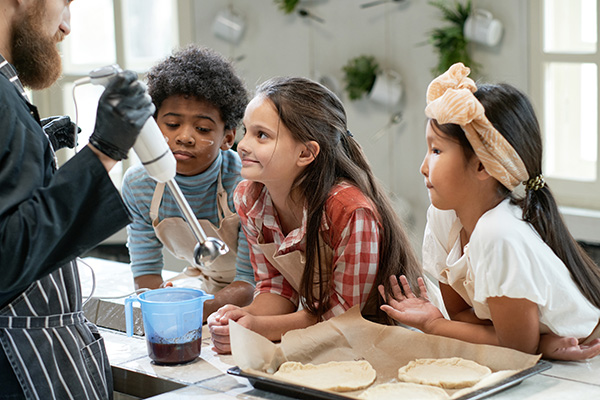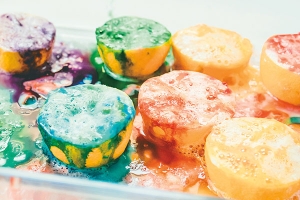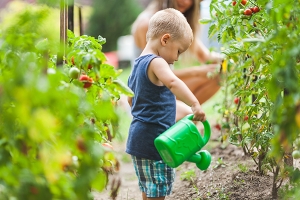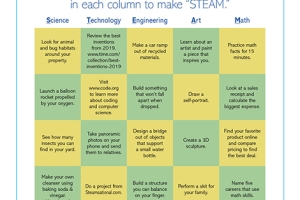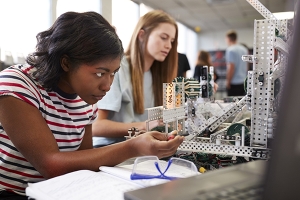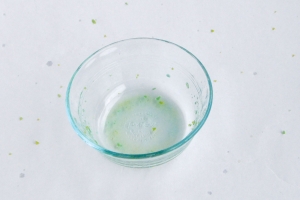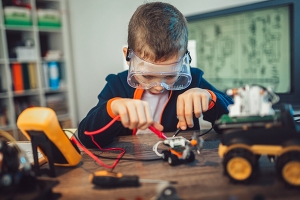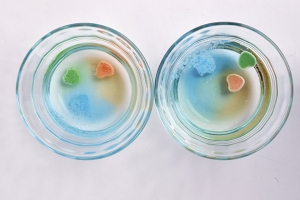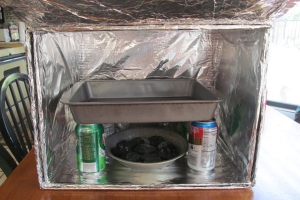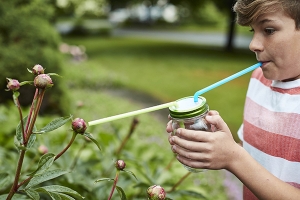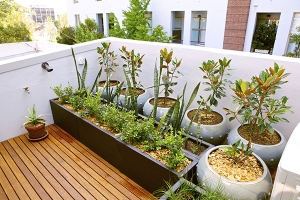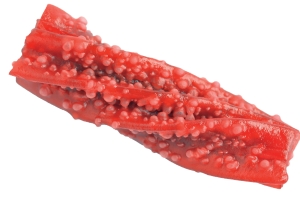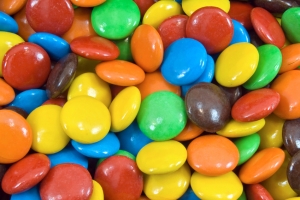
The next time you visit the beaches near Torrey Pines or La Jolla, be sure to look up at the sky. You may notice many colorful gliders soaring high above the ground. These gliders provide the ultimate in “green” flight. Unlike airplanes and helicopters, these simple machines allow people to fly using only air currents. Try the activity below to learn more about glider design and flight.
Materials:
drinking straws
clear tape
ruler
construction paper or card stock
pencil
scissors
To Do:
1.) Use your ruler to measure and mark a strip of paper that is 1” wide and 8 - 10” long. Carefully cut out this strip.
2.) Tape the ends of the strip together to make a large loop.
3.) Now, measure and mark a second strip of paper that is 1” wide and 6” long.
4.) Carefully cut out this strip and then tape the ends together to make a smaller loop.
5.) Use tape to attach the small loop to one end of the straw.
6.) Attach the larger loop to the opposite end of the straw. Make sure both loops are on top of the straw.
7.) Find a clear space to test your glider. Hold the glider in the middle of the straw, with the small loop in front. Throw it gently. How far did your glider travel?
8.) Take a look at the different parts of your glider. What parts do you think you could change to make it soar farther?
9.) Modify your glider (or make a new one) to test your ideas.
Now Try This:
Would your glider fly differently if you changed the size of the straw or taped two straws together? What if you shaped the loops into triangles or squares instead of circles? Try it and find out!
What’s Going On?
If you throw a plain straw, it doesn’t travel very far. Yet, when you add paper loops, the straw glides through the air. This is because the loops act like wings. Just like a bird or airplane, the wings on your glider help it to stay aloft. The difference in air pressure above and below the loops creates what is called “lift.” Air flows over both the top and the bottom of the glider and meets at the edge. Since the air flowing over the top of the wing has farther to travel, it moves faster. This creates a difference in pressure. As the higher and lower pressure airflows move toward each other, the glider lifts up.
-----------------------
Debbie DeRoma is the Education Manager at the Reuben H. Fleet Science Center.
